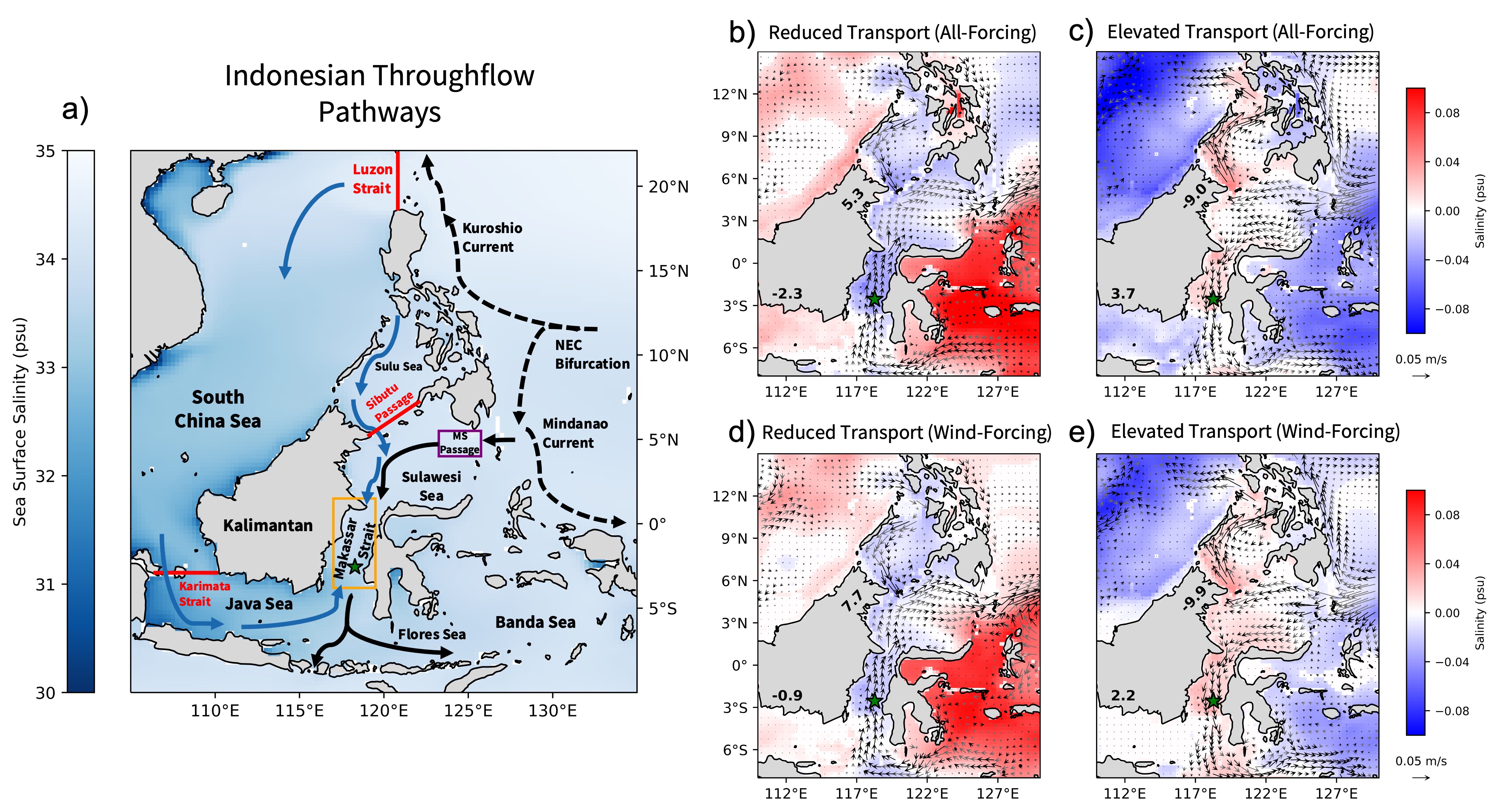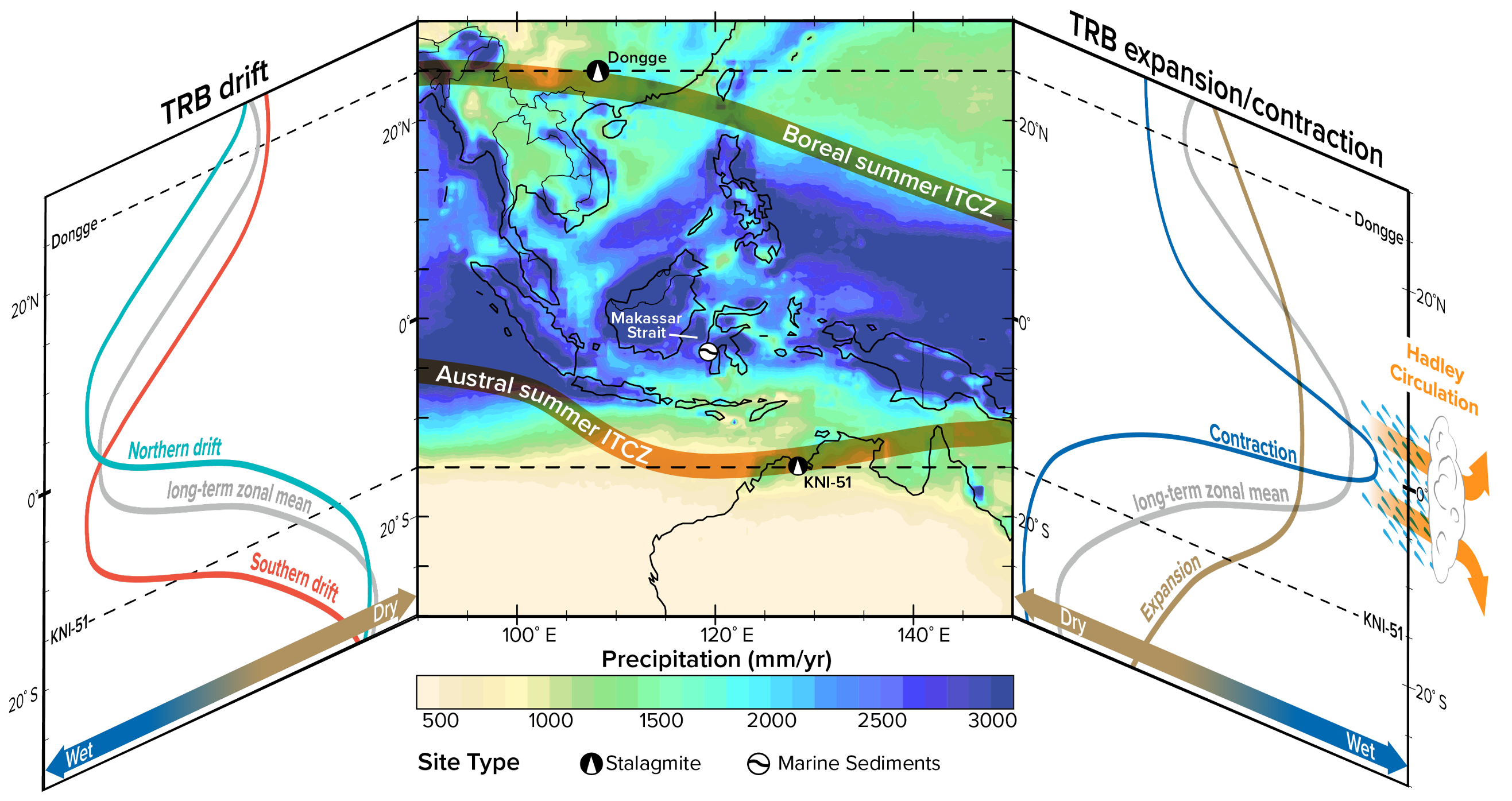Research
Dynamics of the Indonesian Throughflow

The Indonesian Throughflow (ITF) is a series of ocean passageways that connect the tropical Pacific and Indian Oceans. As the only low-latitude connection between two ocean basins, the ITF plays a critical role in Indo-Pacific heat and freshwater transport as well as the global thermohaline circulation. However, direct measurements of subsurface ocean properties are sparse, limiting our understanding of ITF dynamics on longer timescales. Using eddy-resolving climate model simulations and paleoceanographic reconstructions, my research aims to clarify how the ITF has changed over the past thousand years and how anthropogenic warming will affect this vital ocean current over the next century.
Asian Monsoon Variability and Extremes

The annual rainfall brought by the Asian monsoon system is vital for half the world’s population. Understanding the mechanisms that result in variations in Asian monsoon rainfall is therefore critical for the billions of people that depend on it. Employing state-of-the-art climate model simulations alongside regional hydroclimate archives, I study the dynamical drivers of monsoon rainfall variability over the past two thousand years. In one study, we utilized an ensemble of climate simulations to quantify how internal variability and external forcings contributed to multi-year rainfall extremes over the last 1,000 years in Southeast Asia. Recently, we have identified north-south shifts in Asian monsoon rainfall that occur simultaneously with the Australian monsoon system on centennial (100-year) timescales during the late Holocene era. We link this expansion and contraction behaviour of the regional rainbelt to unique interactions between the Pacific and Indian Oceans.
Tropical Basin Interactions

In the Atlantic, Pacific, and Indian Oceans, sea surface temperatures (SSTs) exhibit interannual to decadal variations associated with coupled ocean-atmosphere dynamics. Given their impacts on regional hydroclimate and marine ecosystems, skillful predction of these tropical modes are of utmost interest. In recent years, it has been recognized that these modes do not exist in isolation but interact with each other through atmospheric and oceanic teleconnections. My research aims at deepening our understanding of these basin interactions by assessing whether past and current climate forcings may be modulating these teleconnections. Using a synthesis of tropical paleoclimate records, I reconstructed Indo-Pacific climate modes over the past 400 years and found a period of anomalous interactions during the early 19th century associated with enhanced volcanism. During my postdoc, I am employing Linear Inverse Modeling to quantify how interactions between basins contribute to Pacific decadal variability and how these interactions are projected to change under continued greenhouse gas emissions.
Deglacial Changes in Ocean Circulation
Prior to Industrial Revolution, the most recent significant change to Earth’s climate system was the transition from the last glacial period to the present interglacial (21,000-10,000 years ago). My past research focused on understanding how this large change impacted the global oceans using geochemical analysis of marine sediments cores from the Southern Ocean, tropical Atlantic, and subpolar North Atlantic. Analyzing the elemental and isotopic composition of marine sediments as well as microfossils within them led to important insights into ocean circulation and heat-uptake changes in response to these large climate transitions.
